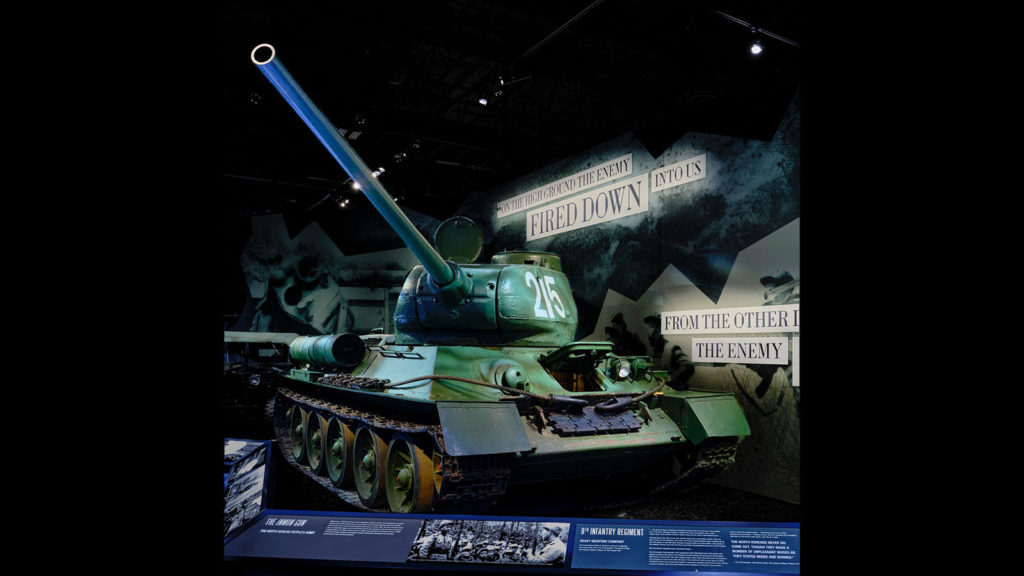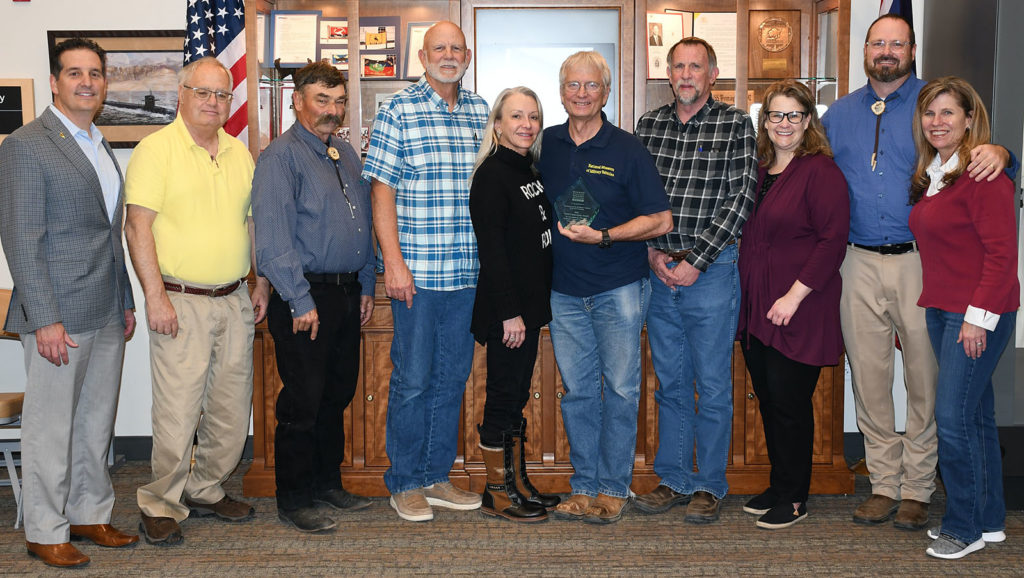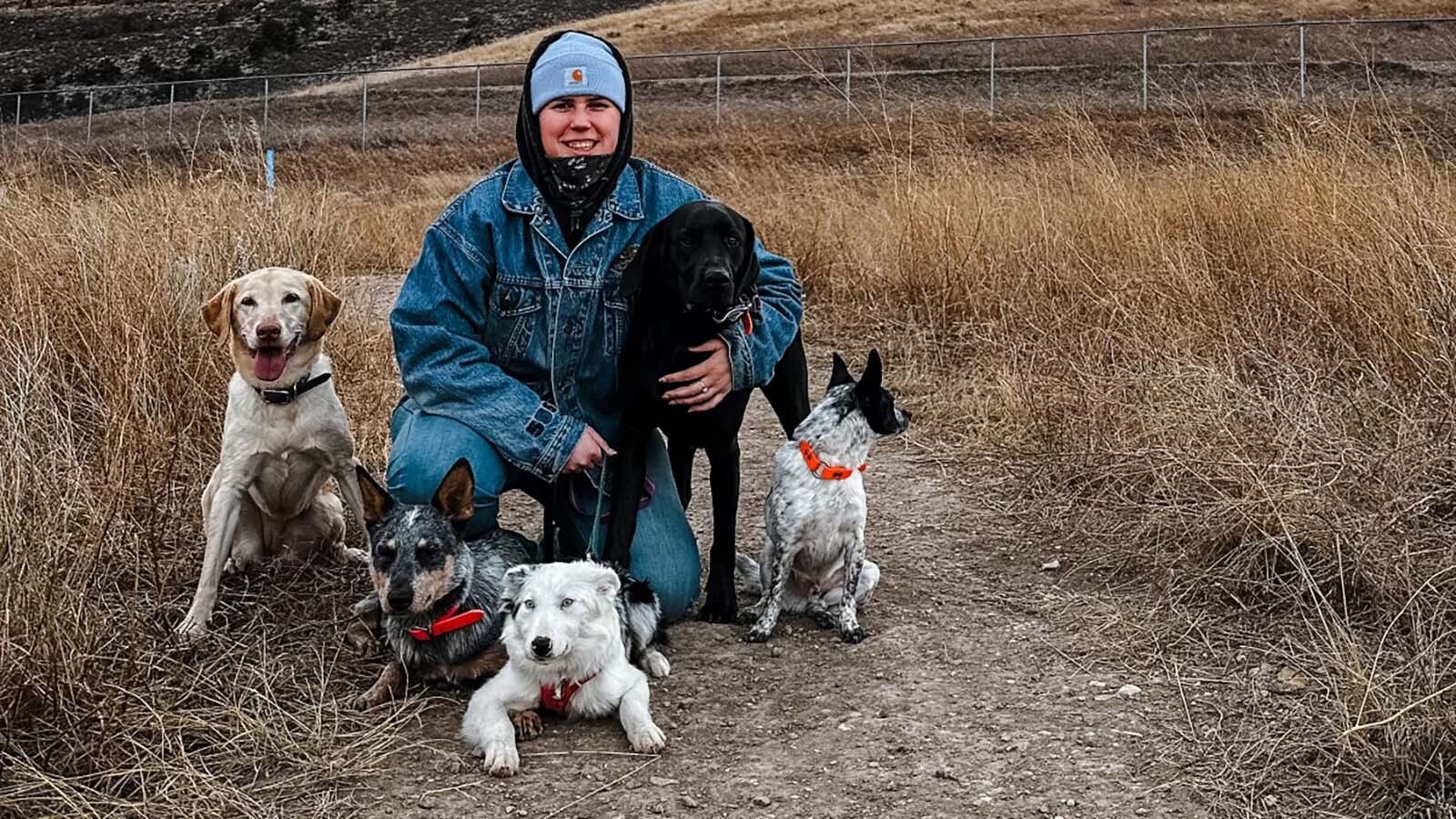By Renée Jean, Business and Tourism Reporter
renee@cowboystatedaily.com
People often told Dan Starks he should start a museum, but he always told them his collection of military vehicles was “just a hobby.”
They’re still a big hobby, but now they are part of the $100 million National Museum of Military Vehicles eight miles southeast of Dubois, which has already attracted thousands of visitors to the tiny town of less than 1,000 people. It also has a ripple effect on the town’s economy.
But the museum is more than a collection of hundreds of military vehicles, it also features some of the most important U.S. military artifacts, including the musket that fired the first shot of the ‘Battle For Bunker Hill.’
Innovation In Motion
Starks was recently awarded the Wyoming Economic Development Association’s 2022 Innovation Award for his work in Dubois.
That work includes not just the museum, but also 24 new apartments, Nana’s Bowling & Bakery and a photo tourism business.
There’s also a vehicle restoration shop employing six people helping to restore about 200 more military vehicles that one day could become part of an expansion of the museum complex, although Starks stressed that is more an aspiration at this point than a firm plan.
“We think what Dan has been able to do for Dubois, Fremont County and the state of Wyoming has been phenomenal,” said Kevin Kershisnik, executive director of IDEA Inc. “The museum is a world-class destination.
“And that is just the beginning of the positive economic impacts to the community. We nominated him so he and his team could be recognized, which is well-deserved.”

30-Ton Paperweight Started It All
Starks didn’t start out thinking he would build a museum, but always had a lifelong interest and fascination with U.S. military history, reading every book he could get his hands on when he was young.
In 2010, he bought what he jokingly refers to as a 30-ton paperweight – a World War II Sherman tank that was rusting away on a hillside and a piece of the history that had always fascinated him.
“I had the idea that I might be able to find somebody to restore that 30-ton paperweight and get it Into a condition so that my wife and I could drive it in the Dubois Fourth of July parade,” he told Cowboy State Daily. “So that was my motivation to buy a first military vehicle.”
Four years later, he’d made no progress on restoring the rusting hunk of a tank, so he bought another. But this World War II Sherman tank had already been restored, and Starks drove it in the Dubois Fourth of July parade in 2014.
Birth Of A Museum
Two years or so later when he heard that the world-famous Normandy Tank Museum was closing its doors and liquidating its collection, he bought a few more historic military vehicles, as well as some mannequins, uniforms and other artifacts.
It would bring his private collection of military vehicles to life.
As more people heard about his cool private collection, they would ask to see them.
Starks was more than happy to oblige, but when people would tell him, “You should start a museum,” he would insist it was just a personal hobby.
Then one summer he found himself showing his collection to multiple groups every day and the idea of a museum began to grow on him then.

Be The Best
Once he and his wife Cynthia committed to the idea, it could not be just any museum. It had to be world-class.
“So, we began to expand our investment in all of the artifacts that we could build the museum around,” Starks said.
In May, the couple opened what is the world’s largest private collection of U.S. military vehicles, a $100 million personal investment in not only the 488 vehicles and many military artifacts, but the buildings that house all of the displays as well.
The couple has even established an endowment to ensure the museum can continue to operate after they’re gone.
“The museum runs at a huge loss,” Starks admitted. “It needs to be subsidized. I put additional money into it on a regular basis. That’s what happens with museums. They don’t make money, they always lose money.”
How Dubois became home
The Starks moved to Wyoming in 2011 after Dan retired from St. Jude Medical. They had been living a high-stress lifestyle and, at that point, just wanted somewhere beautiful, with privacy, and near the Rocky Mountains.
The property they liked best happened to be near Dubois, and that became home.
Among the first questions Starks recalls being asked when he first moved to his new home was how to get more people driving through Dubois to stop?
Starks had been the CEO of a Fortune 500 company, but he had to admit he didn’t have any special answers for that question at the time.

A Destination
Now, however, he feels like he has more than answered it.
The museum is already a destination before it’s even been officially marketed. Last year, the museum drew more than 40,000 visitors, Starks said. He believes that will only increase year by year, particularly once an actual marketing plan is implemented in 2023.
“I wasn’t going to give these things away and send them to some other part of the country,” Starks said. “I’m happy to share them, but it’s got to be where I can be part of the museum itself. So that means the museum has to be here.
“But the benefit of the museum being here, because we live here, is that it provides an answer to that original question. So I kind of say to people, ‘Well, I thought if I put six tanks out by the driveway coming into the museum … that will get people to stop whether they know we’re here or not.’”
Letting Freedom Ring
Starks has a hard time choosing a favorite exhibit at the military museum. But he is very fond of what is arguably his most famous firearm – the musket that fired the first shot at the Battle of Bunker Hill.
“I describe that as the Liberty Bell of American firearms,” he said. “The birthday of the American army is June 14, 1775, three days after the Continental Congress formed our first army. That army engaged the British at the Battle of Bunker Hill.
“The patriot who brought this particular musket and fired the first shot – and we know that he fired the first shot because he was court-martialed for doing so.”
He was a New Hampshire patriot named John Simpson who ultimately survived the war and had been promoted to major by its end. He took his personal weapon back home with him after the war, and it remained in the family until 2018.
“We broke ground on the museum construction in May 2018,” Starks said. “I had no plan to put a Bunker Hill musket in the museum, but I stumbled across the musket at an international firearms auction and couldn’t believe that the record existed, that the provenance existed, and that it wasn’t already in a museum somewhere.
“My wife encouraged me to buy it and put it in our museum. So, you know, here we have this tremendously symbolic firearm. It really symbolizes the beginning if the United States’ first shot, first battle, first army. It symbolizes the reason we have a Second Amendment and the role of the citizen soldier in creating and sustaining the freedom of the United States.”
For Freedom’s Sake
Telling that story of America’s freedom ultimately is what Starks wants his museum to be about.
“I think of the vehicles as being part of a bait-and-switch,” Starks said. “The museum is not about the vehicles. The vehicles attract people.”
What Starks really wants to do is tell the story of freedom in America, all of the sacrifices and the service of not just the military men and women, but their families. That is what has built the America we live in today.
“That’s such a big deal,” Starks said. “And we owe so much to veterans and veterans’ families, so that’s, you know, the theme. Service and sacrifice, spreading the story, and helping better connect civilians – Americans who’ve never served with military, with the small percentage of the American public that has.
“That’s a reason for this museum to be.”
Growing Tourism
The museum has had a lot of ripple effects along the way, Starks said.
“One of the big challenges that every business in Dubois has is we don’t have enough labor in town,” Starks said. “And that’s a challenge for the museum, as well as for every other business. And the reason we don’t have enough laborers is because we don’t have enough housing.”
That prompted Starks and his wife to stand up five new housing units in town.
“We broke ground in June, and we’ve got a 24-unit apartment building that is under construction and is on track to be finished by the end of 2023,” he said. “So that’s part of what’s going on here as well. Businesses can’t expand, and we can’t take more tourists, unless we’ve got more labor, and we need more housing. That’s been a vicious cycle.”
Starks’ wife also started from scratch a photo business for the toursism season, as well as a bowling alley and bakery.
“Our construction projects all together total about $150 million,” Starks said.
Most of that money has stayed in-state.
“And then besides that, we’ve created more than 60 jobs with this variety of businesses that we have in addition to the museum,” Stark said. “I also created a 47,600-square-foot restoration shop in town with six people working full-time restoring my military vehicles.
“So, there’s lots of ripple effects, sandlots of different dimensions due to our contribution to economic development.”
Starks is interested in one day adding to the museum additional displays on World War I as well as the Cold War and the two Gulf Wars.
“That’s an aspiration,” Starks said. “We can’t do that unless there’s more labor. We can’t get more labor without more housing. So there’s a lot of dominoes that need to be fit together.”





